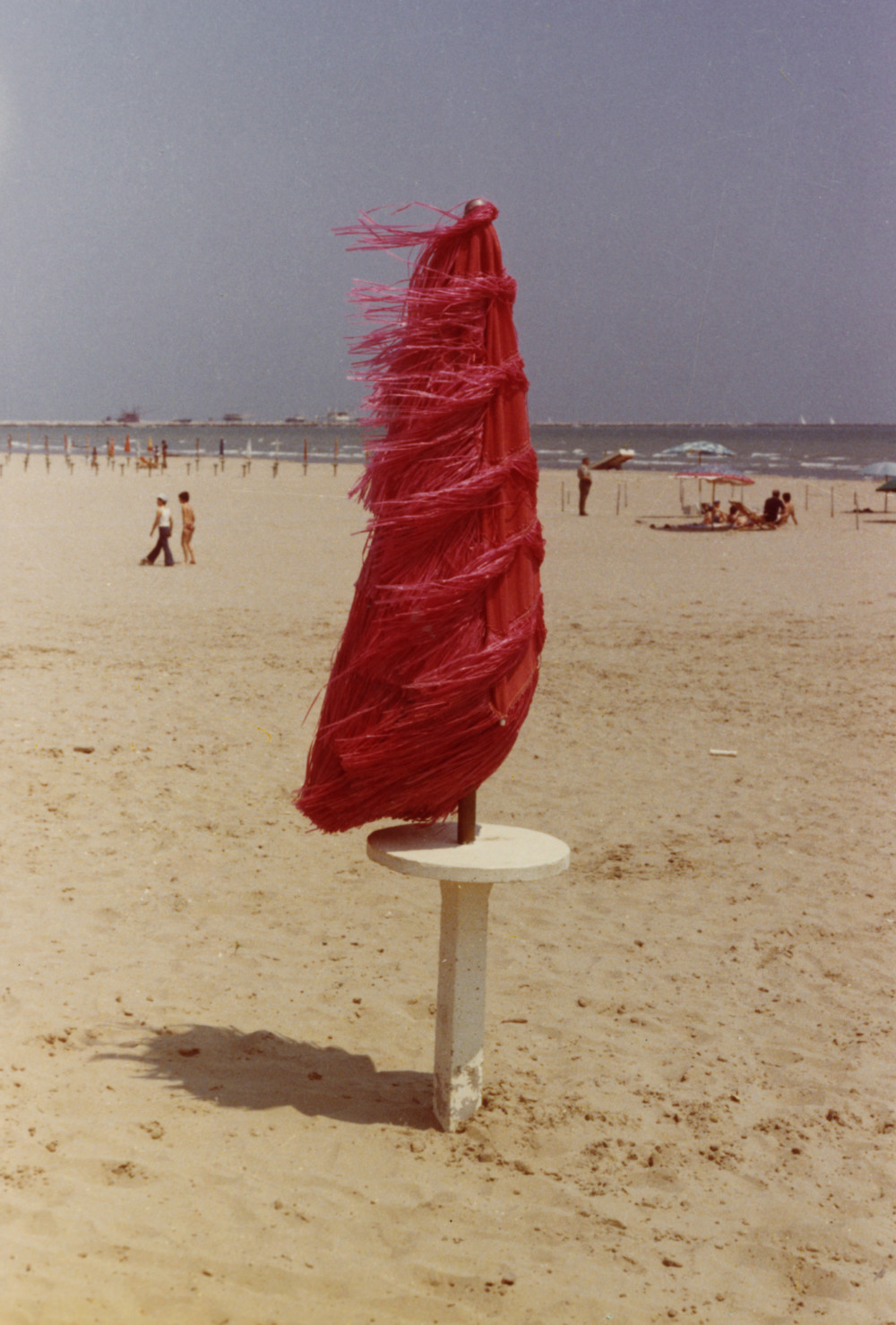Luigi Ghirri

Modena 1971 Vintage C-print 5 × 6 inches; 12 × 14 cm
Inspired in part by the Conceptual art of his time, Luigi Ghirri used his camera to examine the relationship between the physical world and the world of images. His subject was the landscape around him, but his photographs are much more than visual documents of 1970s and 1980s Italy. With his uncanny eye for composition, Ghirri searched out chance arrangements in the human-built world, framing them in his camera’s viewfinder like found photomontages. He worked in color because, as he put it, “the real world is in color,” and he made modestly sized meticulous prints, rarely producing more than one or two from each image.
In 1978 he published Kodachrome, a book of his photographs that touches on many of the subjects that defined his career, including windows, billboards, murals, and other sites where, as he put it, “the world of signs merges with the physical world.” Ghirri wrote eloquently about the power of the image in contemporary life, especially in relation to photography: “Beyond all critical and intellectual explanations, beyond all negative aspects it might possess, photography is, I think, a formidable visual language for fostering this desire for the infinite that inhabits each of us.”
Luigi Ghirri (1943–1992) spent his working life in the Emilia-Romagna region of Italy. Although he exhibited extensively in Italy during his lifetime, it is only since his untimely death that his work has begun to be more widely appreciated. In 2010 Thomas Demand organized the acclaimed exhibition “La Carte d’Après Nature” around Ghirri’s photographs, and in 2011 and 2013 Ghirri’s work was featured in the Venice Biennale. His work has been the subject of several museum exhibitions in recent years, including at the Castello di Rivoli in Turin, the MAXXI Museum in Rome, the Instituto Moreira Salles in São Paulo and Rio de Janeiro, and the Douglas Hyde Gallery in Dublin. In 2018 the first major retrospective of his work at a museum outside of Italy opened at the Museum Folkwang in Essen and later traveled to the Museo Reina Sofía in Madrid and the Jeu de Paume in Paris.
Selected Works

Parigi 1977
From the series Kodachrome
Vintage C-print
Bastia 1976
From the series Kodachrome
Vintage C-print
Salisburgo 1977
From the series Diaframma 11, 1/125 luce naturale
Vintage C-print
Riva di Tures 1977
From the series Kodachrome
Vintage C-print
Roma 1978
From the series Kodachrome
Vintage Cibachrome print
Roma 1979
From the series Diaframma 11, 1/125 luce naturale
Vintage Cibachrome print
Modena 1979
From the series Still Life
Vintage C-print
Bari 1982
From the series Paesaggio italiano
Vintage C-print
Parma 1985
From the series Il profilo delle nuvole
Vintage Cibachrome print
Exhibitions

LUIGI GHIRRI
Mediations
November 10–December 22, 2023
526 West 22nd Street
New York

LUIGI GHIRRI
The Idea of Building
October 22–December 19, 2020
526 West 22nd Street & Online
New York & Online

LUIGI GHIRRI
The Impossible Landscape
February 26–April 30, 2016
526 West 22nd Street
New York

LUIGI GHIRRI
La Città
April 19–July 12, 2014
7818 Santa Monica Boulevard
Los Angeles

LUIGI GHIRRI
Kodachrome
March 6–April 20, 2013
526 West 22nd Street
New York
Group Exhibitions

SUMMER GROUP EXHIBITION
July 19–August 16, 2014
1062 North Orange Grove
7818 Santa Monica Boulevard
Los Angeles

LA CARTE D’APRÉS NATURE
An exhibition curated by Thomas Demand
July 19–October 8, 2011
522 West 22nd Street
New York
Current Museum Exhibitions

Luigi Ghirri. Polaroid ’79–’83
Luigi Pecci Center for Contemporary Art
Prato, Italy
November 22, 2025–May 10, 2026

Mount Analogue: Michelangelo Antonioni and Luigi Ghirri
La Virreina Centre de la Imatge
Barcelona, Spain
November 15, 2025–February 15, 2026

Luigi Ghirri: Photography Lessons
Palazzo dei Musei
Reggio Emilia, Italy
April 25, 2025–March 1, 2026